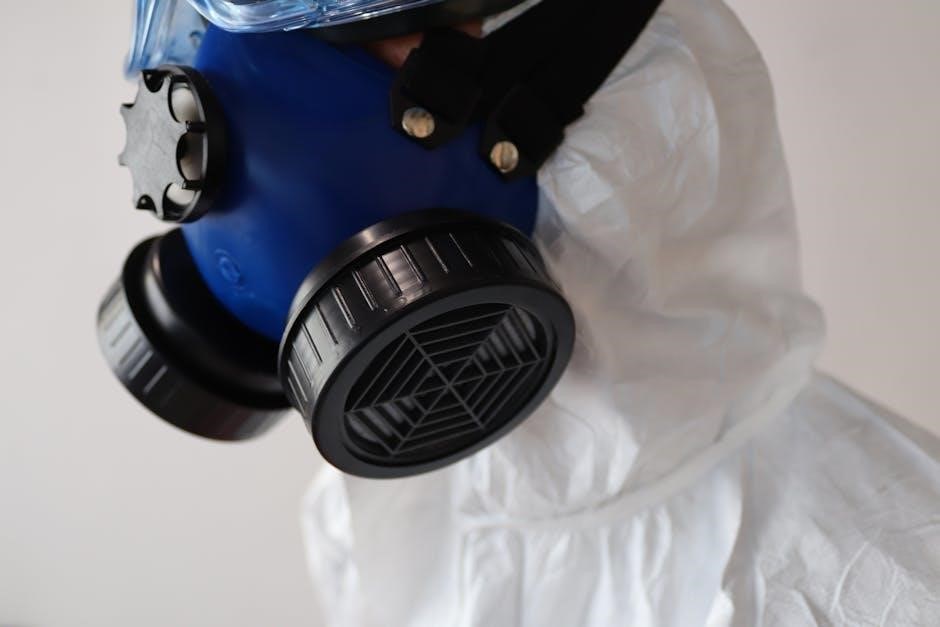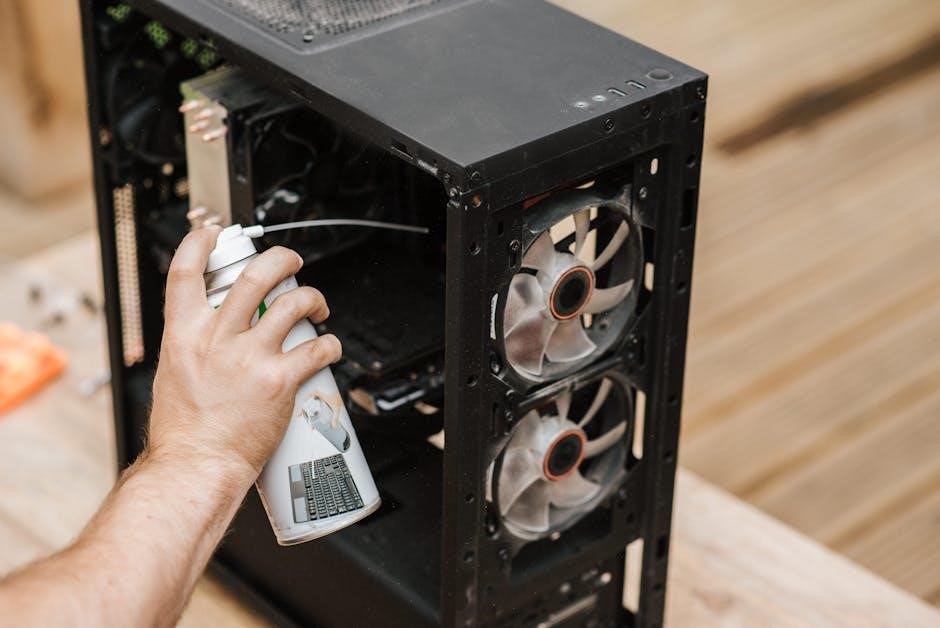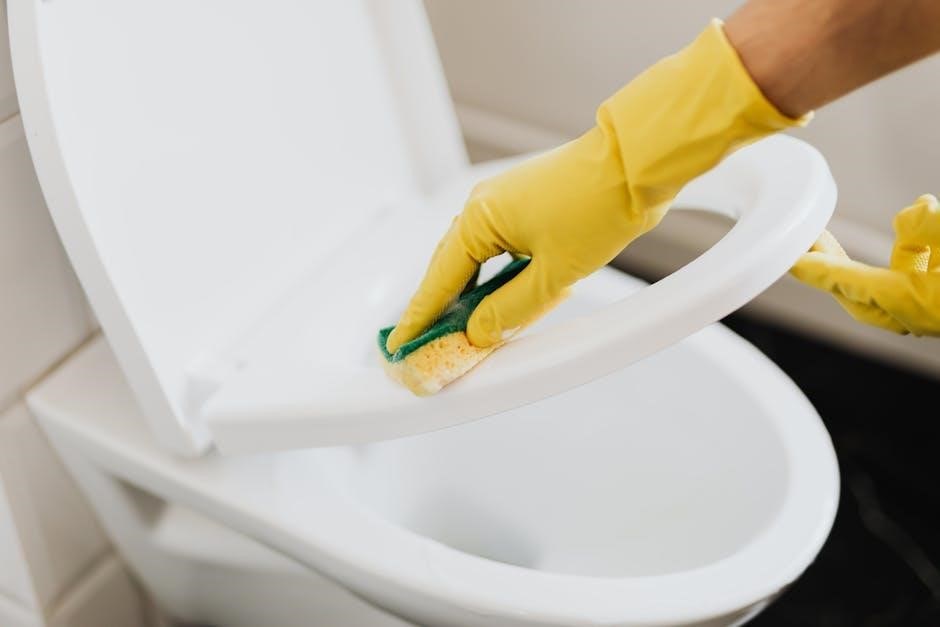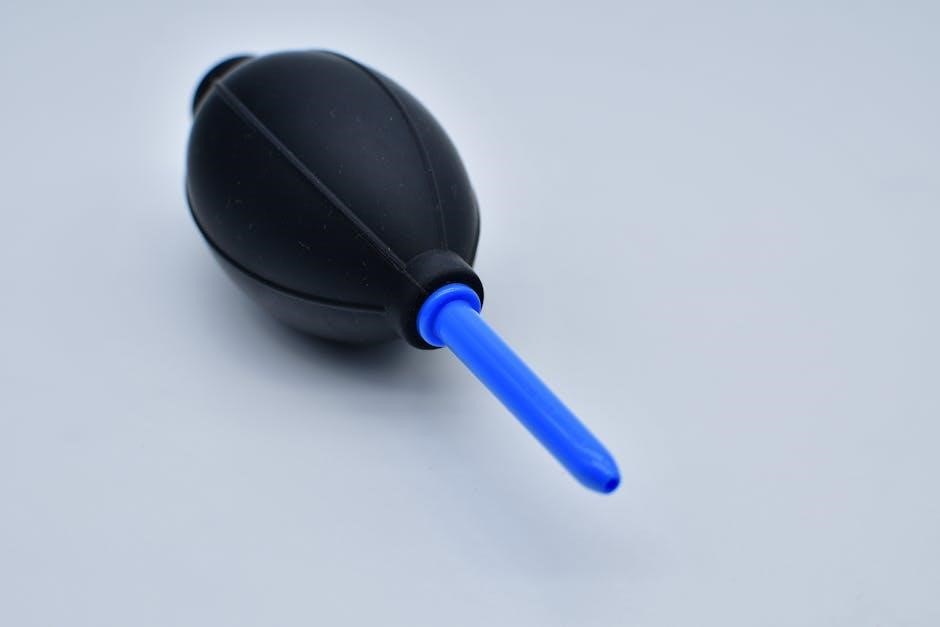miele induction cooktop instructions
Miele induction cooktops offer advanced features like PowerFlex zones, Conctivity for synced ventilation, and specialized cooking modes, combining energy efficiency with sleek, modern design for precise control.
1.1 Overview of Miele Induction Cooktop Features
Miele induction cooktops are renowned for their advanced technology and sleek designs. They offer multiple cooking zones with flexible layouts, allowing for various pot sizes. Features include touch controls for precise heat adjustment, a booster function for rapid heating, and automatic cookware detection. Energy efficiency is a key highlight, as these cooktops only consume power when cookware is present. Additionally, they come with child safety locks and residual heat indicators for enhanced safety. These features combine to provide a seamless and efficient cooking experience.
1.2 Benefits of Using Miele Induction Cooktops
Miele induction cooktops offer exceptional energy efficiency, as they heat cookware directly, reducing energy loss. They provide faster cooking times compared to traditional methods, making meal preparation quicker. The cooktops are safer, as they only heat when cookware is present, preventing accidental burns. They also promote a cleaner kitchen by minimizing heat radiation and cooking odors. Additionally, the sleek, modern design enhances the aesthetic of any kitchen, while the durable construction ensures long-lasting performance. These benefits make Miele induction cooktops a practical and stylish choice for home cooks.
1.3 Importance of Following Instructions
Adhering to the instructions ensures safe and efficient operation of your Miele induction cooktop. Proper usage prevents accidents, optimizes performance, and extends the lifespan of the appliance. Misuse can lead to damage or malfunctions, potentially voiding the warranty. By following guidelines, you maintain safety, achieve consistent cooking results, and preserve the cooktop’s durability. Always refer to the manual for specific details tailored to your model, ensuring a seamless and trouble-free cooking experience while protecting your investment in this advanced kitchen appliance.

Safety Precautions
Always prioritize safety when using your Miele induction cooktop. Ensure proper ventilation, avoid overheating, and keep children away. Use compatible cookware and avoid hazardous materials nearby.
2.1 General Safety Guidelines
Always ensure the Miele induction cooktop is installed on a heat-resistant surface and kept away from flammable materials. Maintain a clean cooktop to prevent spills from causing accidents. Use only compatible cookware to avoid overheating or damage. Never leave cooking unattended, especially when children are present. Avoid placing metal utensils or jewelry near the touch panel to prevent interference. Keep the cooktop dry and avoid using it near water sources. Ensure proper ventilation in the kitchen to prevent moisture buildup and potential damage.
2.2 Child Safety Lock Features
Miele induction cooktops feature a child safety lock to prevent accidental activation. This lock disables the touch controls, ensuring the cooktop cannot be turned on unintentionally. Activate the lock by pressing and holding the designated button until a confirmation signal appears. The cooktop will remain locked until the feature is deactivated, providing peace of mind for households with children. This feature is especially useful during cleaning or when the cooktop is not in use. Always refer to the user manual for specific instructions on enabling and disabling the child safety lock.
2.3 Proper Use of Cookware
For optimal performance and safety, only use cookware compatible with Miele induction cooktops. Cookware must have a magnetic base, such as cast iron or stainless steel, to work effectively. Non-magnetic materials like aluminum or copper require a magnetic bottom to function. Ensure cookware is clean and dry before use to prevent damage to the cooktop. Avoid using abrasive cleaners or scourers, as they can scratch the surface. Always lift cookware rather than sliding it to maintain the cooktop’s finish. Using the right cookware enhances safety, efficiency, and cooking results. Refer to the user manual for specific recommendations.
2.4 Avoiding Hazardous Materials on the Cooktop
Avoid placing hazardous materials like acid, bleach, or abrasive chemicals on the Miele induction cooktop, as they can damage the surface. Never use metal objects that could scratch the glass, such as sharp utensils or abrasive cleaners. Acidic substances, like tomato sauce or citrus juice, should be cleaned immediately to prevent etching. Avoid leaving plastic or aluminum foil on the cooktop, as they can melt or leave residues. Always use approved cleaning products to maintain the cooktop’s finish and ensure long-term performance. Promptly wipe up spills to prevent damage and discoloration.

Installation Requirements
Ensure proper installation by a certified professional to meet safety and performance standards. Measure your kitchen space precisely and verify electrical compatibility before installation begins. Maintain proper ventilation and follow Miele’s guidelines for a seamless setup. Always check local building codes and ensure the cooktop is installed on a heat-resistant surface for optimal function and safety. Proper installation ensures longevity and prevents potential hazards. Adhere to Miele’s specifications for a secure and efficient cooking experience. A well-installed cooktop enhances safety, efficiency, and overall performance, making cooking easier and more enjoyable. Always refer to the user manual for detailed installation instructions and recommendations. Professional installation guarantees compliance with safety standards and ensures the cooktop functions as intended. Measure your countertop accurately to fit the cooktop perfectly, avoiding any gaps or misalignment that could affect performance. Verify electrical connections match the cooktop’s requirements, and ensure proper ventilation to prevent heat buildup. Follow Miele’s installation guidelines to ensure the cooktop operates safely and efficiently. A correct installation is crucial for optimal performance and longevity of your Miele induction cooktop. Always use Miele-approved materials and tools for installation to maintain warranty validity and ensure safety. Proper installation prevents future issues and ensures the cooktop meets energy efficiency standards.
3.1 Hiring a Professional Installer
Hiring a professional installer is highly recommended for your Miele induction cooktop. A certified technician ensures compliance with safety standards and manufacturer guidelines. They will assess your kitchen setup, verify electrical compatibility, and install the cooktop correctly. Proper installation prevents potential hazards and ensures optimal performance. A professional will also handle any complex wiring or ventilation requirements. Additionally, using a Miele-approved installer may be required to maintain warranty validity. They will ensure the cooktop is level, securely fastened, and functioning as intended. This guarantees safety, efficiency, and long-term durability. Always prioritize professional installation for a hassle-free experience.
3.2 Electrical Requirements
Your Miele induction cooktop requires specific electrical connections to function safely and efficiently. A dedicated 240V electrical circuit is necessary, as it operates on high power (typically 3.5–4.5 kW). Ensure the circuit is rated for at least 40 amps, though this may vary depending on the model. The cooktop must be connected to a properly grounded outlet or hardwired by a licensed electrician. Use the correct gauge wire to avoid overheating. Always refer to the user manual for exact specifications and consult a professional to ensure compliance with local electrical codes and safety standards.
3.3 Ventilation Recommendations
Proper ventilation is essential for efficient and safe operation of your Miele induction cooktop. A vented range hood or ducted ventilation system is highly recommended to remove heat, steam, and cooking odors. Ensure the ventilation system is installed according to local building codes and manufacturer guidelines; For optimal performance, maintain a minimum airflow rate of 300 CFM (cubic feet per minute). Regularly clean or replace filters to ensure efficient airflow. Proper ventilation not only enhances cooking comfort but also helps prevent moisture buildup and maintains indoor air quality.

Operating the Miele Induction Cooktop
Discover the ease of operating your Miele induction cooktop with its intuitive interface, advanced safety features, and efficient cooking technology designed for seamless culinary experiences.
4.1 Turning On the Cooktop
To turn on your Miele induction cooktop, ensure the surface is clear of any objects. Press the On/Off button located on the touch control panel. The cooktop will activate once compatible cookware is detected. Use the touch controls to adjust power levels or select specific cooking zones. Always ensure the cooktop is on a stable, heat-resistant surface and keep children away. The cooktop will automatically shut off if no cookware is detected or if an error occurs. Refer to the user manual for detailed activation instructions and safety guidelines.
4.2 Using the Touch Control Panel
The touch control panel on your Miele induction cooktop offers intuitive operation. Gently tap or slide your finger across the surface to select cooking zones, adjust power levels, or access special functions. The panel is highly sensitive, so light touches are sufficient. Use the plus (+) and minus (-) symbols to increase or decrease heat settings. The LED display provides clear feedback on selected options. For added convenience, the panel automatically adjusts brightness based on ambient light. Always clean the panel with a dry cloth to maintain responsiveness and avoid interference with controls.
4.3 Understanding Cooking Zones
Miele induction cooktops feature clearly defined cooking zones, each with its own independent controls. These zones are designed to accommodate various pot and pan sizes, ensuring optimal energy use. The cooktop automatically detects the size of your cookware and adjusts the heating area accordingly. Some models offer flexible zones that can combine into larger cooking areas for oversized dishes. The zones are marked with illuminated rings, providing visual confirmation of active areas. Always ensure cookware is placed precisely within the marked zones for efficient and safe operation.
4.4 Automatic Cookware Detection
Miele induction cooktops are equipped with advanced sensors that automatically detect the presence and size of cookware placed on the cooking zones. This feature ensures that heat is only generated when compatible cookware is properly positioned, optimizing energy efficiency and safety. The cooktop will not activate unless it detects suitable cookware, such as stainless steel or cast iron pots and pans. This intelligent detection system prevents accidental startups and ensures precise heat distribution, enhancing both performance and user convenience.

Adjusting Power Levels
Miele induction cooktops offer seamless power level adjustment via the touch control panel, allowing precise control over heat intensity. The booster function enables rapid energy delivery for faster cooking.
5.1 Manual Power Level Adjustment
Miele induction cooktops allow for precise manual adjustment of power levels, ensuring tailored heat control. Users can easily adjust the cooking zones by sliding their finger across the touch control panel or tapping to select specific levels. This feature provides flexibility for various cooking techniques, from simmering to boiling. The cooktop’s intuitive interface ensures smooth transitions between power levels, optimizing cooking efficiency. Always use compatible cookware to ensure accurate heat distribution and responsiveness during manual adjustments.
5.2 Booster Function for Rapid Heating
Miele induction cooktops feature a Booster Function designed for rapid heating, ideal for tasks like boiling water quickly or searing meat. This function increases the power output to the cooking zones temporarily, ensuring faster results. Activation is simple via the touch control panel, and the cooktop automatically adjusts to prevent overheating. The Booster Function is energy-efficient and time-saving, making it perfect for high-heat cooking needs. Always ensure cookware is compatible and suitable for high-power settings to maximize performance and safety.
5.3 Using the Built-In Timer
Miele induction cooktops include a convenient built-in timer to help you manage cooking tasks with precision. The timer allows you to set specific durations for each cooking zone, ensuring dishes are cooked to perfection without constant supervision. Simply select the zone, enter the desired time using the touch control panel, and the cooktop will automatically adjust or turn off once the timer expires. This feature is especially useful for boiling, simmering, or frying, as it prevents overcooking and enhances overall cooking efficiency.

Special Cooking Functions
Miele induction cooktops offer advanced functions like simmer, steam boil, and stir-fry modes, ensuring precision and versatility for various cooking techniques.
6.1 Simmer Function for Gentle Heating
The simmer function on Miele induction cooktops provides gentle, consistent heat, ideal for delicate sauces, soups, or melting chocolate. Activate it via the touch control panel to maintain a low, steady temperature. This feature ensures even heating without overheating, perfect for dishes requiring precise control. Use it to prevent boiling over or scorching, making it essential for cooking methods that demand patience and subtlety. The simmer function enhances culinary results by offering a stable, low-heat environment tailored for specific recipes.
6.2 Steam Boil Function for Fast Water Heating
The Steam Boil function on Miele induction cooktops accelerates water heating for rapid boiling, perfect for pasta, sterilizing, or preparing instant meals. Activate it via the touch control panel to achieve a rolling boil quickly and efficiently. This mode optimizes energy use by focusing heat directly on the cookware, reducing cooking time. It’s ideal for tasks requiring quick boiling, ensuring water reaches the desired temperature swiftly without unnecessary energy consumption. This feature enhances convenience for everyday cooking tasks.
6.3 Stir Fry Mode for High-Heat Cooking
The Stir Fry Mode on Miele induction cooktops delivers high-heat cooking for intense stir-frying and searing. This mode ensures even heat distribution, allowing for quick and consistent cooking results. It’s ideal for achieving the perfect caramelization and texture in dishes like stir-fries, sautés, and seared meats. Activate the mode via the touch control panel to instantly access high-power heat, enabling faster cooking times while maintaining flavor. This feature is designed to meet the demands of high-heat cooking, making it a versatile option for various culinary techniques.

Cleaning and Maintenance
Regular cleaning and maintenance ensure optimal performance and longevity of your Miele induction cooktop; Use recommended products to prevent scratches and maintain its sleek appearance. Daily wipe-downs and deep cleans keep the surface hygienic and functional, ensuring efficient cooking and safety; Proper care also prevents damage from spills and splatters, guaranteeing years of reliable service.
7.1 Recommended Cleaning Products
For optimal cleaning of your Miele induction cooktop, use Miele-approved cleaning products or gentle, non-abrasive cleaners. Avoid harsh chemicals, bleach, or scrubbers, as they may damage the surface. A microfiber cloth dampened with water or a vinegar solution is ideal for daily wipe-downs. For tougher stains, use a specialized induction cooktop cleaner with a soft sponge. Always follow the manufacturer’s instructions to maintain the cooktop’s finish and functionality. Regular cleaning prevents scratches and ensures a smooth, even surface for cooking.
7.2 Daily Cleaning Routine
After each use, clean your Miele induction cooktop while it is still slightly warm but not hot. Wipe the surface with a microfiber cloth dampened with water or a mixture of water and white vinegar. This prevents food residue from hardening. For light splatters, use a dry microfiber cloth to avoid streaks. Avoid harsh chemicals or abrasive materials that could damage the glass surface. Regular cleaning maintains the cooktop’s appearance and ensures optimal performance. This routine also prevents stubborn stains from forming.
7.3 Deep Cleaning the Cooktop Surface
For deep cleaning, use Miele’s recommended glass cleaner or a gentle cooktop cleaner. Apply the product evenly to the surface using a soft, lint-free cloth. Let it sit for 2-3 minutes to break down stubborn stains. Gently scrub the area with a non-abrasive sponge or cloth. Rinse the cloth thoroughly and wipe away the cleaner. Dry the surface with a clean, dry cloth to prevent streaks. For tough spots, repeat the process. Avoid harsh chemicals or abrasive materials, as they can damage the glass. Regular deep cleaning ensures the cooktop remains pristine and functional.
7.4 Inspecting and Cleaning Air Inlets/Outlets
Regularly inspect and clean the air inlets and outlets to ensure proper airflow and prevent dust buildup. Use a soft, dry brush or a vacuum cleaner with a gentle suction setting to remove debris. Dampen a soft cloth with water and gently wipe the vents to remove any remaining dust or grime. Avoid using harsh chemicals or abrasive materials. Clean the inlets/outlets every 1-2 months or more frequently in high-use environments. Proper maintenance ensures efficient performance and prevents overheating issues.

Troubleshooting Common Issues
Identify common problems like error codes, uneven heating, or cookware incompatibility. Refer to the user manual or contact Miele support for solutions. Regular maintenance helps.
8.1 Cookware Compatibility Issues
Miele induction cooktops require cookware with ferromagnetic bases, such as cast iron or stainless steel. Non-compatible materials, like aluminum or copper without an iron core, won’t heat. Ensure cookware has a magnetic bottom; if a magnet sticks, it works. Incompatible cookware may cause no heating or error messages. Avoid using glass or ceramic without a metal base. For optimal performance, use Miele-recommended cookware. Refer to the user manual for detailed compatibility guidelines or contact support for assistance. Proper cookware ensures efficient and safe cooking.
8.2 Error Messages and Solutions
Miele induction cooktops may display error messages for specific issues. Common errors include “E1” for overheating or “E2” for cookware detection problems. If an error appears, turn off the cooktop, allow it to cool, and restart. Ensure cookware is compatible and properly placed. For “E3” (ventilation issues), check the air inlets and ensure proper ventilation. Refer to the user manual for error code meanings. If issues persist, contact Miele customer support for assistance. Regular maintenance and correct usage can prevent most errors.
8.3 Resolving Heating Inconsistencies
If the Miele induction cooktop is not heating consistently, check the cookware compatibility and ensure it is properly placed on the cooking zone. Verify that the cookware material is ferromagnetic and suitable for induction. Clean the cooktop surface and cookware base to ensure proper energy transfer. If issues persist, reset the cooktop by turning it off and on. Adjust the power level or use the booster function for faster heating. Ensure the cooktop is installed on a stable, heat-resistant surface. Consult the user manual or contact Miele support for further assistance.

Energy Efficiency and Eco-Friendliness
Miele induction cooktops are highly energy-efficient as they transfer heat directly to cookware, reducing energy consumption. Their eco-friendly design minimizes environmental impact, using less power and promoting sustainable manufacturing. This makes them an environmentally responsible choice for modern kitchens.
9.1 How Induction Technology Saves Energy
Miele induction cooktops use electromagnetic fields to heat cookware directly, minimizing energy loss. Unlike traditional stoves, they don’t heat the surrounding surface, ensuring up to 90% energy efficiency. This direct heat transfer reduces cooking time and energy consumption. The cooktop only activates when compatible cookware is present, eliminating standby power use. Faster heating also means less overall energy is required for cooking tasks, making induction a highly efficient and eco-conscious choice for home kitchens.
9.2 Reducing Carbon Footprint
Miele induction cooktops contribute to a reduced carbon footprint by optimizing energy use. Their high efficiency means less electricity is consumed, lowering greenhouse gas emissions. Additionally, faster cooking times reduce overall energy consumption. Durable construction extends product lifespan, reducing waste. Miele also prioritizes eco-friendly materials and sustainable manufacturing practices, further minimizing environmental impact. By choosing induction, users support energy conservation and align with global efforts to combat climate change through smarter, greener kitchen solutions.
9.3 Eco-Friendly Features of Miele Cooktops
Miele induction cooktops are designed with eco-friendly features to minimize environmental impact. They use energy-efficient technology that converts up to 90% of energy into heat, reducing waste. Made from recyclable materials, these cooktops align with sustainable practices. Additionally, smart sensors optimize energy consumption by adapting to cookware size and type. Miele also incorporates eco-mode settings to further reduce power use during cooking. These features not only benefit the environment but also promote responsible energy consumption, making Miele cooktops a greener choice for modern kitchens.
10.1 Summary of Key Instructions
Always follow Miele’s guidelines for installation, operation, and maintenance to ensure safety and longevity. Use compatible cookware, keep the cooktop clean, and utilize safety features like child locks. Regularly inspect and clean air inlets to maintain performance. Adjust power levels and timers as needed for precise cooking. Refer to the user manual for troubleshooting common issues and optimizing energy efficiency. Proper care ensures your Miele induction cooktop delivers exceptional performance and eco-friendly results for years to come.
10;2 Final Tips for Optimal Performance
For the best experience with your Miele induction cooktop, clean the surface regularly to prevent scratches and maintain responsiveness. Always use compatible cookware to ensure efficient heating. Experiment with booster functions for faster cooking and utilize timers for precise control. Store the cooktop manual for quick reference and check for software updates to enhance functionality. Lastly, avoid overheating by monitoring temperatures and keep the area well-ventilated for safety and performance.

Additional Resources
Explore Miele’s official website for detailed guides, troubleshooting tips, and FAQs. Register your cooktop to access exclusive support and ensure warranty coverage for optimal assistance.
11.1 Accessing the User Manual
The Miele induction cooktop user manual is available online via Miele’s official website. Visit the support section, enter your model number, and download the PDF. This comprehensive guide includes installation, operation, and troubleshooting details. It can also be accessed through the Miele app. If you prefer a physical copy, print the manual or request one from customer service. The manual is available in multiple languages, ensuring clarity for all users. Refer to it regularly for optimal performance and maintenance of your cooktop.
11.2 Contacting Miele Customer Support
To contact Miele customer support, visit their official website and navigate to the support section. Here, you can find contact information, including phone numbers and email addresses. Utilize the live chat feature for quick inquiries or submit a service request form for assistance with installations or repairs. Ensure you have your model number and warranty details ready for efficient support. Additionally, Miele offers regional customer service numbers, so select your location for accurate contact information. For immediate help, consider calling their support hotline or reaching out through their social media channels.






























